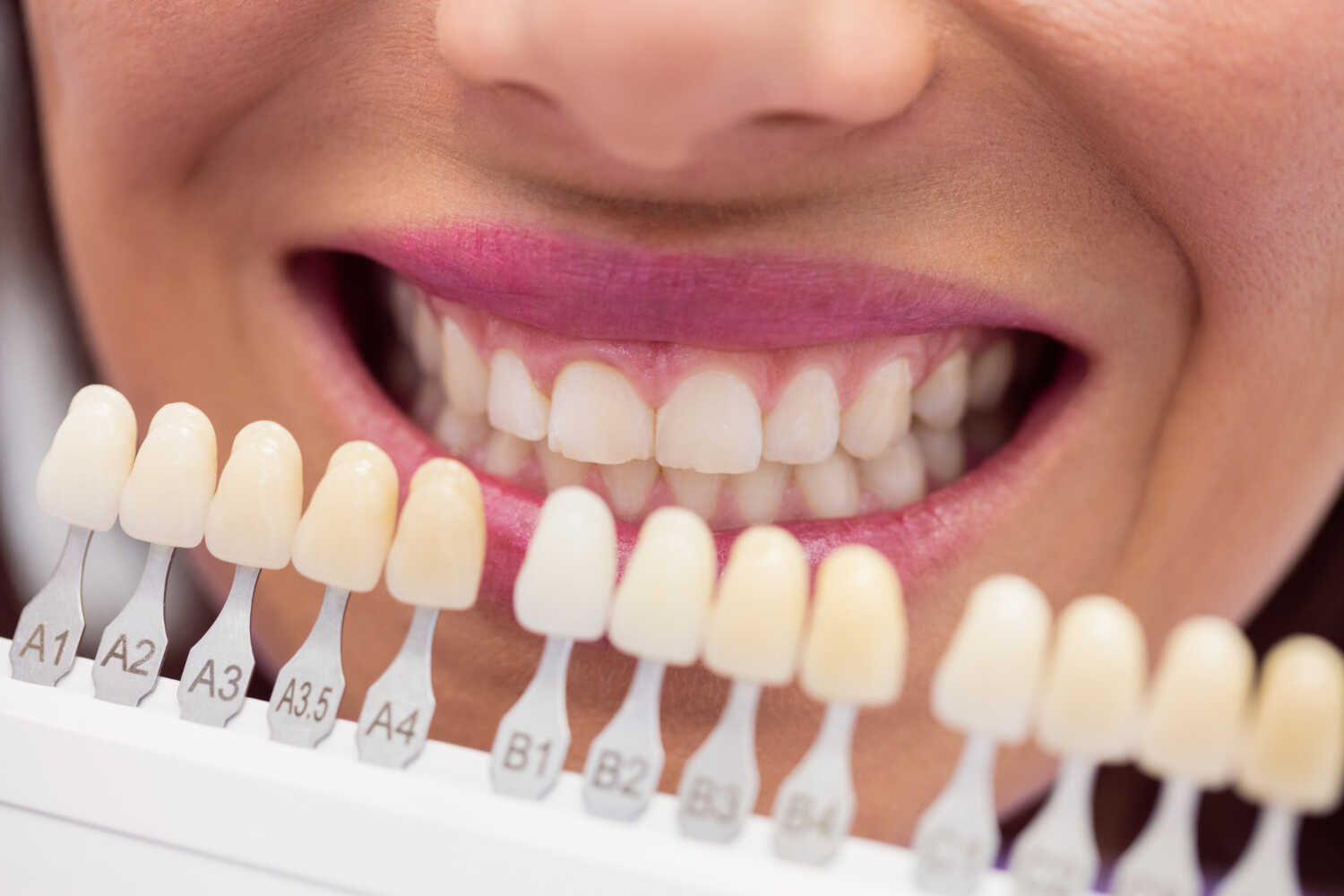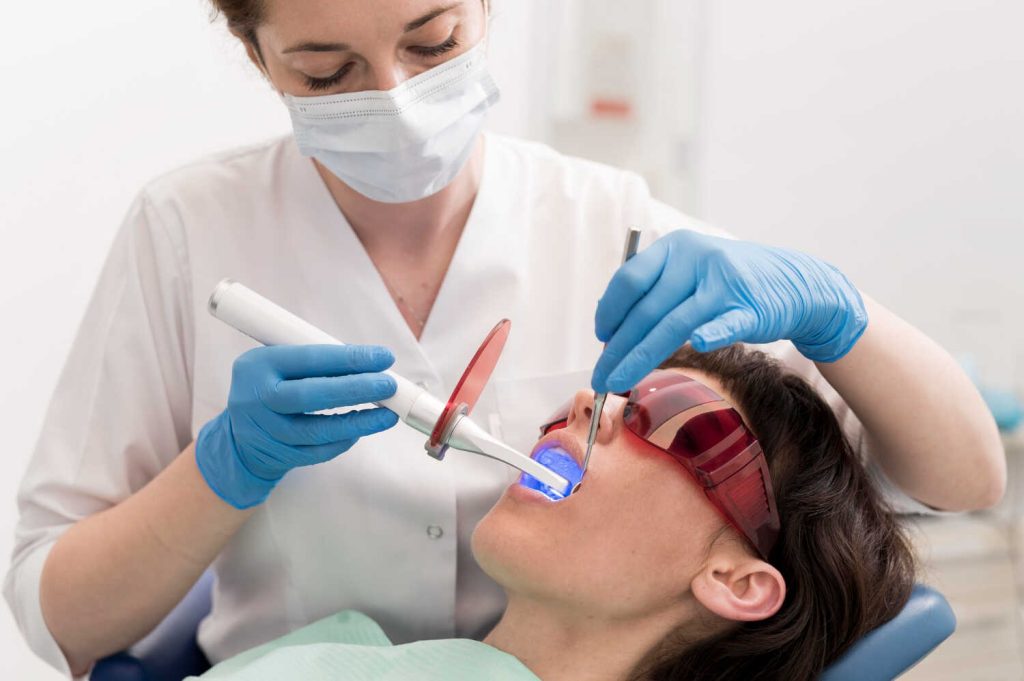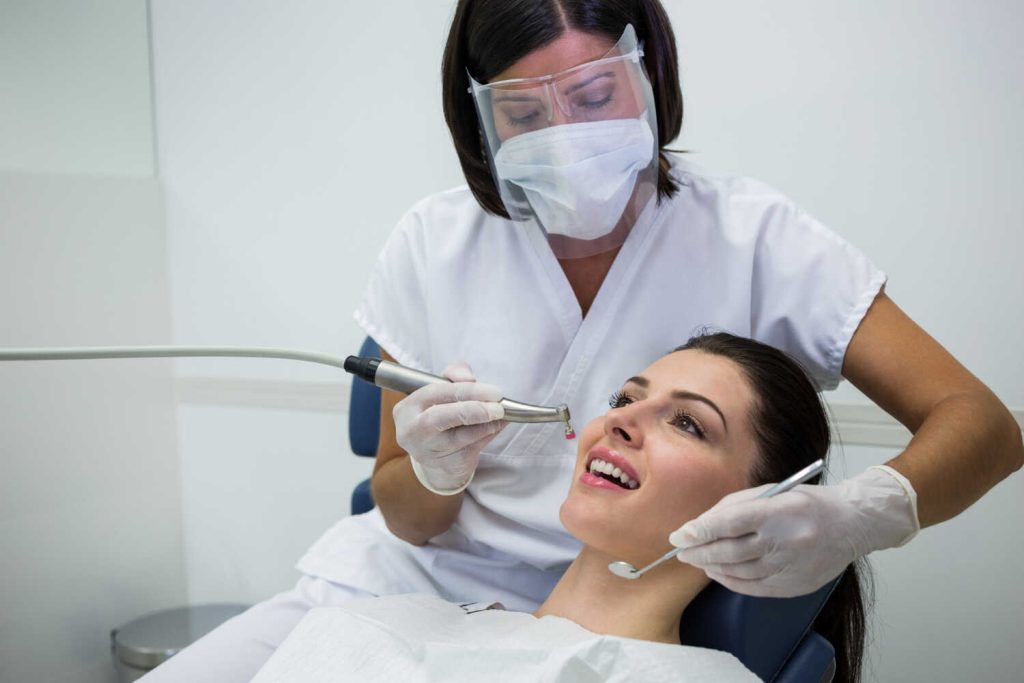Introduction
With an ever-growing focus on white, bright smiles, at-home and in-office teeth whitening procedures have soared in popularity. However, improper use of bleaching chemicals and light can lead to tooth damage. Understanding the causes, risks, symptoms, and treatment approaches for teeth whitening damage teeth empowers consumers to make educated choices about cosmetic smile enhancement. This blog covers fundamentals around preventing or addressing any adverse impacts of teeth whitening.
What is Teeth Whitening Damage?
Teeth whitening damage encompasses tooth enamel, dentin, or pulp injury caused by overuse of bleaching chemicals or light sources during stain removal procedures. Effects range from temporary temperature sensitivity to more permanent bond deterioration between enamel and inner tooth layers. Severity depends on the whitening gel concentration, light exposure length, and existing dental vulnerabilities.
What Damage Can Teeth Whitening Cause?
Common types of damage from whitening include:
- Sensitivity is due to peroxide’s penetration into microscopic tubules within teeth during the light/chemical reaction. Usually, it dissipates within days of ending treatment.
- Gum irritation – From whitening gel contact with gums, causing temporary inflammation or soreness.
- Receding gums – In rare cases, overuse eats away gum tissue or deteriorates connective tissue.
- Root exposure – Associated gum recession can lead to visible tooth roots and increased sensitivity.
- Enamel cracking – Extreme cases from extended overuse of high-percentage whitening gels.
- With professional protocols and reasonable use, risks of anything beyond temporary sensitivity are very low.
What are the Side Effects of Teeth Whitening?
Common transient side effects of whitening include:
- Tooth sensitivity to temperature – Very common, dissipates rapidly
- Gum irritation – Caused by contact with gels; minimize risk with isolation barriers
- Increased tartar buildup – Peroxide subtly roughens the enamel surface, which collects more plaque if not removed by diligent oral hygiene.
These symptoms typically resolve naturally after ending a whitening treatment series when following best practices.
What is the Best Treatment for Whitening Teeth?
Dentist-supervised in-office whitening allows specialists to closely monitor the treatment process with custom isolation tools to prevent gel contact with gums. This protects tissues while stronger intensity lights and higher peroxide percentages rapidly break down deep stains for less total exposure time needed. For those highly predisposed to sensitivity, dentists can prescribe special desensitizing chemicals. Over-the-counter whitening strips or tray kits also brighten smiles when following manufacturer instructions.
Can Teeth Whitening Cause Permanent Damage?
The majority of damage caused by teeth whitening is temporary and fades not long after ending treatments with proper post-procedure oral hygiene. However, in rare cases, existing dental issues like recession or cracks can be exacerbated by whitening due to seeping chemicals damaging the dentin interior once exposed. The permanent nature depends on the problem’s extent before cosmetic whitening. But when performed responsibly, the damage is minor and short-lived.
Do Teeth Recover After Whitening?
For those who experience common transient sensitivity or gum irritation during whitening treatments, symptoms usually fully resolve within 1-2 weeks post-treatment as the teeth naturally re-harden protective enamel layers and heal from chemical exposure. Any bonding deterioration between enamel and underlying tooth structure also recalcifies. With quality oral care practices continued after the bleaching procedures, teeth ultimately recover well with time unless major unseen issues already exist.
Risks of Teeth Whitening Damage
The risks of problematic damage from whitening depend on the following:
- Peroxide concentration – Higher levels increase the chances of tissue irritation
- Total exposure time – Extended lengths of light and chemical treatment sessions
- Existing dental flaws – Chips, cracks, or recession make nerves more accessible
Over-the-counter kits follow conservative guidelines, minimizing the likelihood of anything beyond temporary effects. At the same time, abuse of professional formulas without close monitoring does pose a heightened risk.
What are the Symptoms of Teeth Whitening Damage?
- Tooth sensitivity – Usually too hot and cold from pulp nerve irritation
- Gum tenderness or soreness – Signs tissue has been exposed, leading to inflammation
- Receding swollen gums – Potential start of eroded gum line
- Sudden jolt of pain – Rare but serious sign of pulp inflammation
Experiencing sensitivity several days after a session is ordinary as cells recalcify. But lasting sensitivity, soft tissue damage, or more require prompt dental exams.
Is Teeth Whitening At a Dentist Damaging?
Dentist-administered whitening is less damaging than at-home methods when products are used as intended. Their unique skills, tools for tissue isolation and control of gel amounts, and light timing aim to improve safety and precision for damage prevention. Issues typically arise when patients or non-specialists misuse systems without oversight, leading to excess peroxide penetration. Sticking to evidence-based whitening guidelines, dentists enhance safety and accelerate stain removal, so fewer total procedures are necessary.
What are the Treatment Options for Teeth Whitening Damage teeth?
- Desensitizing toothpaste – Alleviates sensitivity discomfort post-whitening. Most need only temporary use.
- Bonding treatment – Repairs structural enamel damage or covers exposed root surfaces.
- Antibacterial rinses – Helps gums post-irritation, prevents infection in recession spots
- Root coverage procedures – Surgical grafting to protect exposed roots if significant gum erosion occurs.
- Dental restorations – For severe cases where structural integrity loss necessitates crowns or veneers.
In moderate cases, simply allowing several weeks for healing resolves most symptoms. Otherwise, consult your dentist promptly for specialized care.
Why is Mylifesmiles best for teeth whitening and for treatment options for damaged teeth?
Mylifesmiles dental clinic in Richardson uniquely specializes in post-whitening sensitivity relief and gum healing solutions. Their doctors can assess the extent of damage and the required intervention, whether OTC or professional treatments preceded problems. On-staff periodontists address gum trauma or recession related to whitening, while expert restorative dentists handle structural repairs of enamel cracks or decay occasioned after bleaching procedures compromise tooth integrity. No referral hassles across departments – just coordinated diagnosis and customized treatment for ideal corrections or relief tailored for your needs from an exceptional team equipped for any teeth whitening damage teeth scenario.
Conclusion
While increasingly popular for enhancing self-confidence, teeth whitening does pose some inherent risks of dental damage with overuse or existing structural vulnerabilities. Fortunately, most side effects, like temporary sensitivity or gum inflammation, are minor and fade rapidly after ceasing whitening treatments when following appropriate protocols. However, recognizing symptoms of more excessive damage early allows specialists like those at Mylifesmiles to intervene with advanced reparative therapy. In only the rarest worst cases do effects become permanently problematic. So consult your dentist with any concerns after whitening but otherwise rest assured the likelihood of lasting harm remains impressively small when responsibly integrating teeth brightening regimens.





